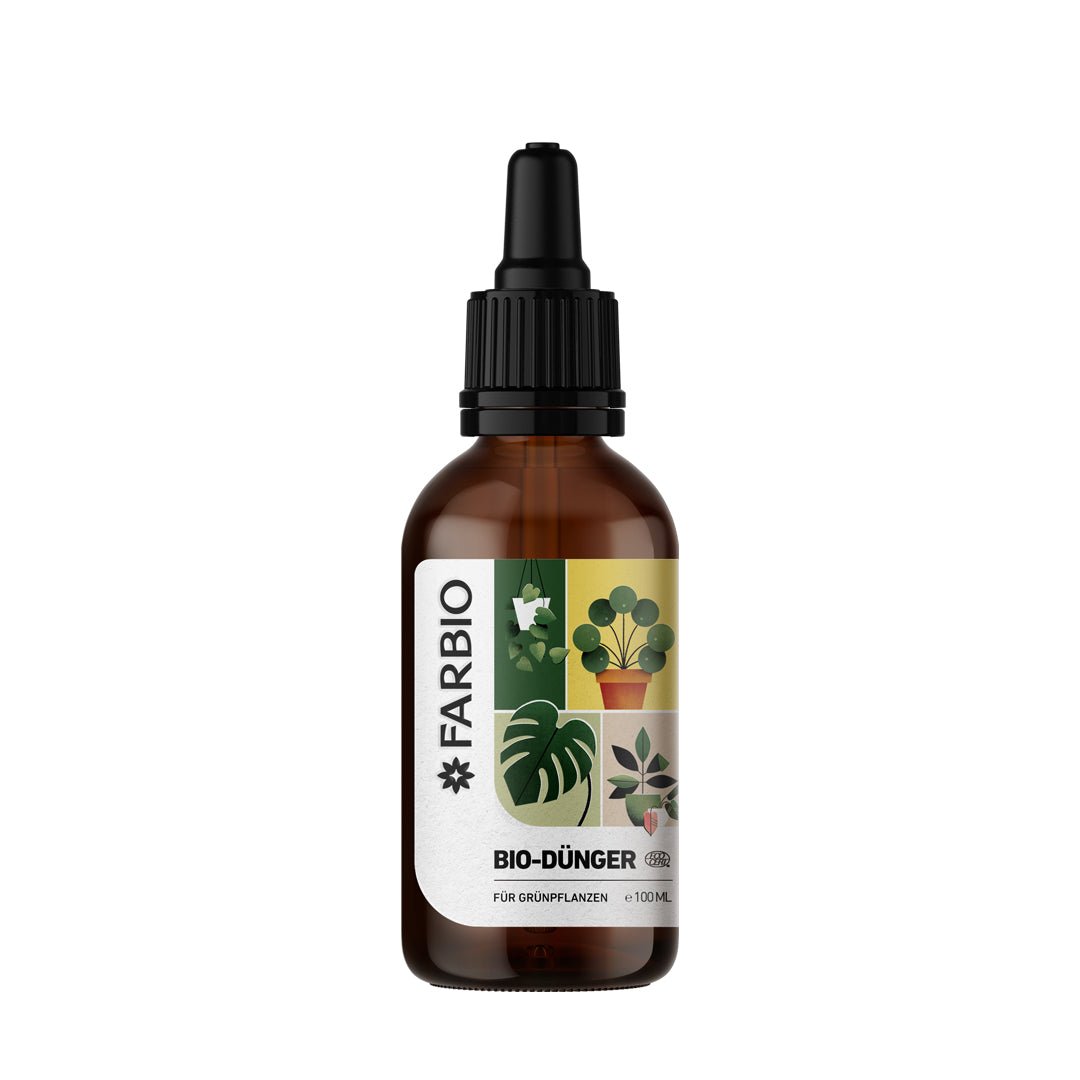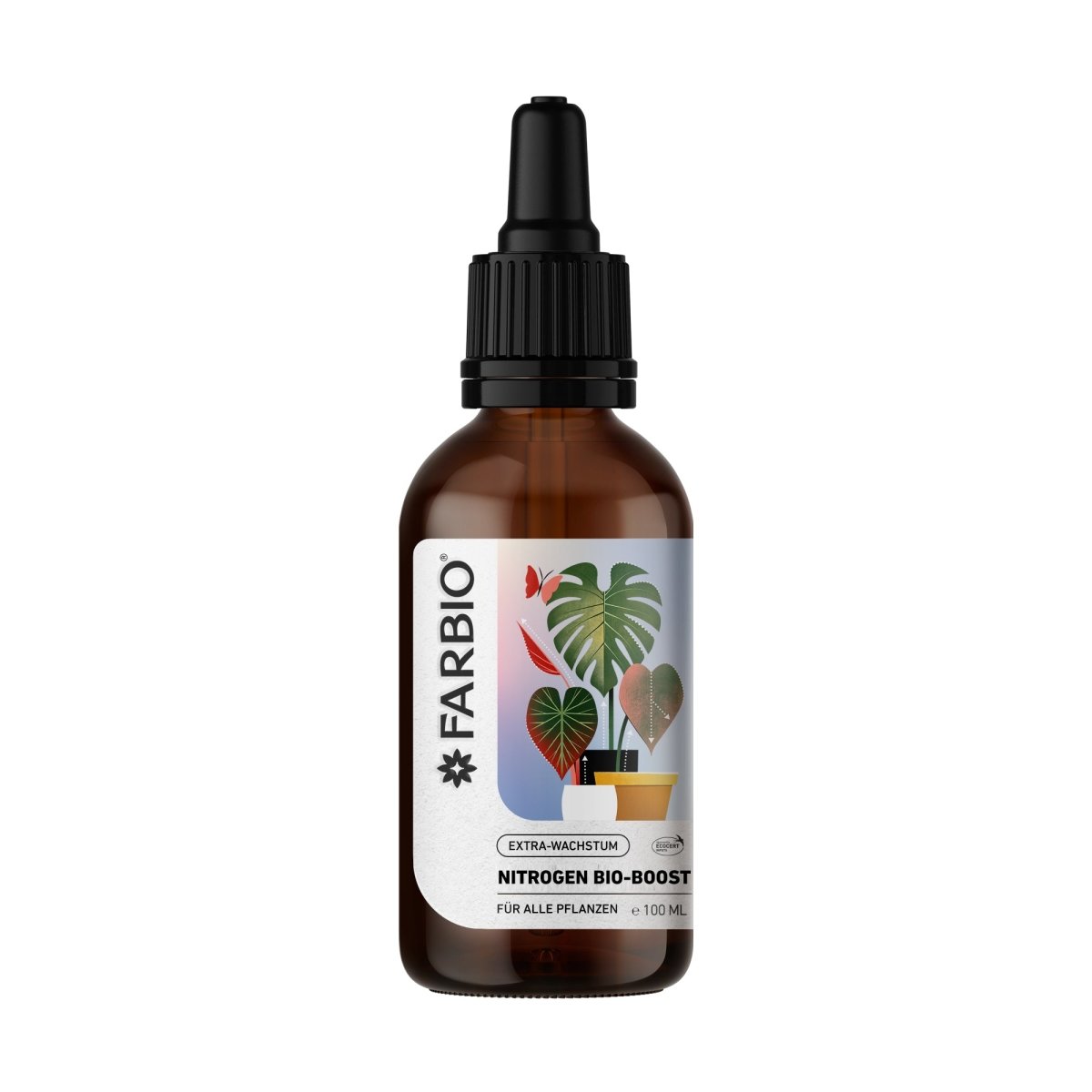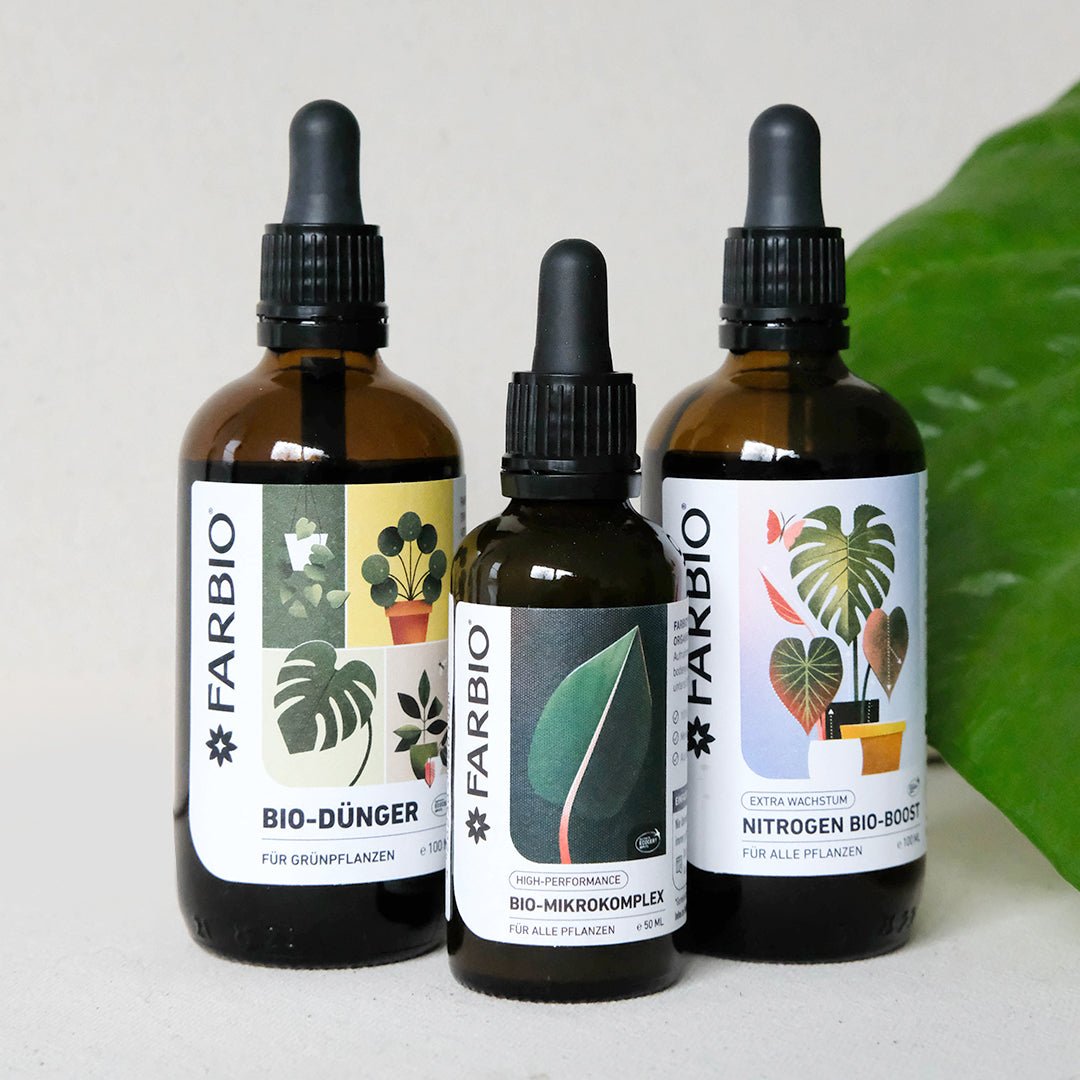Hello plant lovers! Your beloved plant is losing leaves and you're worried? No panic! We'll help you find out what's wrong and how you can nurse your green friends back to health.
Houseplant loses leaves
Are you frustrated because the leaves on your houseplant are falling off? Are they turning yellow, brown or wilting? These signs can indicate various problems.
Yellow leaves
Yellow leaves can indicate a variety of problems, from waterlogging to a lack of nutrients, especially nitrogen. If your plant's older leaves turn yellow, there's no cause for alarm: it's natural leaf shedding. Only if this occurs more often or on younger leaves should you worry more. Here you will find all the symptoms of the most common nutrient deficiencies so that you can check your plant for them.

Brown/Wilting Leaves
Brown leaves are often a sign of drought and lack of water or too much direct sunlight. Check the moisture content of the soil and consider moving your plant to a less sunny location to prevent it from drying out more quickly.
If you give a lot of water, it can also mean that the roots of your plant rot and can no longer absorb anything. Also make sure that the pot has a drain and, if necessary, drainage so that excess water can flow away.
Are you fertilizing too little? A lack of potassium or copper also causes the leaves to wilt. Potassium deficiency leads to brown spots on the leaves.
Possible causes of losing leaves
There are various reasons why your plant may drop leaves. Here are some common ones:
Root rot or rotary root
Root rot is a serious problem caused by too much moisture in the root zone. This can cause the plant to have less functional roots that do not provide it with adequate nutrients and eventually cause it to lose its leaves. If you suspect that your plant is affected by root rot, check the condition of the roots, remove rotten parts and repot the plant. You can find out more about it here.

Twisting roots, also called "circling roots," are a phenomenon in which the roots of a potted plant grow in a circular pattern instead of spreading normally. This usually happens when the plant sits in a place that is too small for too long. The roots then begin to grow along the inner wall of the pot instead of spreading outward. This can lead to a number of problems such as: B. reduced growth, lack of nutrients and even death of the plant.
Plants lose leaves due to pest
Pests such as spider mites or aphids can also cause leaf loss. Check leaves and stems for pest infestations and, if necessary, treat with a biological agent.
Nutrient deficiency or over-fertilization
A lack of important nutrients or over-fertilization can also lead to leaf loss. Use a high-quality organic liquid fertilizer to ensure your plant gets all the nutrients it needs without over-fertilizing.
Many leaves fall off the ficus / rubber tree: this is how you can save these houseplants
Ficus and rubber trees are often affected by increased leaf loss. These popular houseplants belong to the same plant family as the fiddle leaf fig. Very often a twisted root is the cause. To avoid this problem, it is important to regularly repot the plant into a larger pot to give it enough space for root growth. If rotary roots are already present, the root ball can be carefully loosened when repotting and moved to a more natural position to promote further growth.

If water and nutrient uptake by the roots is impaired, the application of foliar fertilizers can be an important aid in preventing leaf loss and plant death until the roots have recovered.
This is what you should do if your plant loses leaves
If your plant is losing leaves, it's important to act quickly to correct the problem. Here are other actions you can take:
Fertilizer for enough nutrients
Use a high-quality organic liquid fertilizer to ensure your plant receives all the key nutrients and trace elements it needs for healthy and vigorous growth. It is important that you care for your houseplant continuously and not just when it shows symptoms of deficiency.

Change of location and adjustment in case of incorrect care (substrate/watering)
A care mistake, such as incorrect substrate or incorrect watering, can also cause your plant's leaves to change color or lose them. Use airy substrate and water your plant regularly over the saucer. Make sure that your plant receives enough light and that the humidity, temperature and, especially in winter, drafts are appropriate in its environment.















